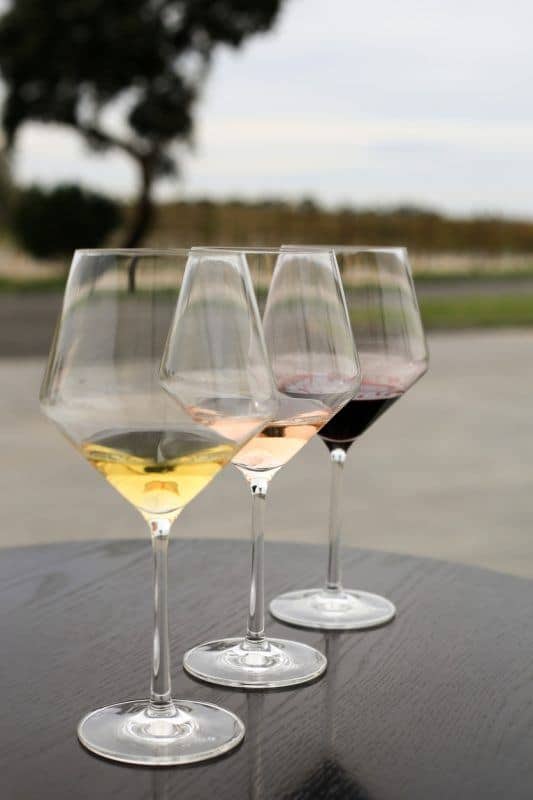Portuguese wine is fabulous. Simple!
But, do you remember the last bottle of wine from Portugal you tried? If it was ‘Mateus Rose’ then we need to talk…!
We are massive fans of Portuguese wine here at Inspiring Wines and we want to get you on board for the 2017 “Revolução do vinho”.
So, where to start? How about with the grapes. Do you know your Alfrocheiro from your Avesso? Your Touriga Nacional from your Touriga Franca? No? (Me neither! ). Have you always thought Portugal is really only about Port? It’s fair to say, they are very good at that but they are also extremely good at making wine and have been doing so since the Phoenicians were in town in the 10th Century BC so they’ve had a bit of practice.
There are two very attractive qualities about Portuguese wines, firstly it really isn’t necessary to know your grape varieties, in fact you’ve probably never heard of many of them, and there are lots! Many of them are indigenous varieties and rarely found outside Portugal.
By the way, if you are looking for more on the many different grape varieties, take a look at this Wikipedia entry:
More detail on Portugal’s grape varieties
And secondly, and more importantly, real quality is extremely affordable. There are some absolutely cracking wines coming out of Portugal at absolutely cracking prices. It’s always been a mystery to me why Portuguese wine does not get more recognition. But that said, part of me loves it that they don’t. Remember the days when you were one of the cool kids because you loved bands before they were big, but once they get that first play on the radio, you knew it was all over, because then everyone and their Mum would start to claim to have loved them for years…
As with much of Europe, wine in Portugal is generally labelled by region rather than grape which makes life a little easier, it means you don’t necessarily need to know your Borraçal from your Arragônes or your Tinta Barroca, and despite producers beginning to list grape varieties on labels, it’s still much easier to pick out your faves by the region they come from.
The Appellation System is fairly straight-forward in simple terms there are 4 levels of classification:
- Vinho de Qualidade Produzido em Região Demarcada (VQPRD) – These are wines with the highest levels of protection and will always indicate a specific vineyard. These wines are labeled D.O.C. (Denominação de Origem Controlada).
- Wines that have more regulations placed upon them but are not in a DOC region fall under the category of Indicação de Proveniência Regulamentada or IPR (Indication of Regulated Provenance)
- Vinho Regional displays a specific region within Portugal.
- Vinho de Mesa displays only the producer and that it is Portuguese
The main wine producing regions:
This is just my pick of the key wine producing regions, there is much more info available online if you are interested. Wikipedia has a good page for reference:
More detail on the wine regions of Portugal
1. Vinho Verde
Is in the fertile north west where Portugal meets Galicia, this is home to the eponymous light, delicate Vinho Verde. It doesn’t actually mean ‘green wine’ as you might think but ‘young’ wine, typically these wines are released 3 to 6 months after harvest. The main grape in the north is Alvarinho and towards the south of the region Loureira takes over. Traditionally wines were produced with a bit of a spritz to them but this is becoming far less common now with newer blends and especially with single-vineyard wines or varietals.
2. Douro
This is one beautiful region and probably Portugal’s best known, it also leads the way as the country’s premium wine region. Once upon a time not so long ago it was frowned upon to be producing an ‘unfortified’ wine in these parts, this is most definitely Port country. But no longer. Touriga Nacional is the boss grape here, it’s used for making port too along with Tinta Barroca and Touriga Franca amongst others. Wines are generally high in tannins with bags and bags of flavour.
3. Dão
To the South of the Douro, the Dão’s most famous son is a wine of the same name. There is a lot going on in the Dão, there are several extremely exciting winemakers plying their trade here producing some very sophisticated and accessible wines.
4. Bairrada
With Barro being the Portuguese word for clay, you could probably take a stab at what the soil in this region is like? Baga is the only kid on the block when it comes to grape variety and can result in some fairly hardcore wines that really need a bit of age to calm down. Lots of wineries now blend Baga with non-indigenous grapes to make their wines more approachable, but a real Bairrada is only Baga. Although predominantly know for reds there has recently been an upturn in white and sparkling wine production in this area.
5. Alentejo
The Alentejo region is hot! Damn hot! And big! In fact it takes up almost a 3rd of the country and the temperature can easily get above 35°C in July and August. It stretches down to the Algarve in the south and it is a diverse region with it’s own challenges but I am glad to report some very innovative producers. It is, in some circles of polite conversation, referred to as Portugal’s ‘New World’. Remember the name and expect good things.
That is all well and good but “what will I like” I hear you asking?
Probably the easiest way to offer a little guidance on what you should be looking out for is basic comparisons with wines you will probably already know, it certainly doesn’t cover all the intricacies of Portuguese wine but it’s a start and will give you a guide to get you going.
You are just going to have to order a few different bottles, sit down on a Friday evening and try them..! I know! Life can be harsh, but it has to be done…
Let’s start with whites, if you are a Chardonnay buff then you need to be looking out for wines from the Alentejo region, full of creamy flavour, but it’s hot so expect tropical fruit, peach and pineapple, don’t be expecting lots of oak as with some of the higher end US Chardonnays, wines from Alentejo tend to be a little simpler but more lovely for it.
If you’ve a bent for a Sauvignon Blanc have a look at Vinho Verde, bags of citrus, fruity easy drinkers abound here and there’s lots of choice.
As for reds, there is a lot more on offer here as you’d expect but in simple terms if it’s Shriaz that floats your boat look out for reds from Alentejo, masses of dark berry fruit and supple soft tannins. If you’re a fan of a Rioja or Chianti you want to be trying reds from the Dão region, with their red cherry flavours and firm tannins. Last but by no means least, if a big bruising Cab Sav is your tipple of choice look at Douro, fruit in abundance, red cherries, blackcurrant, hints of spice and so, so affordable.
By no means an exhaustive list but I’m hoping it has got your juices flowing and inspired you to take a look at the wines of Portugal.
At Inspiring Wines we have some excellent examples currently in stock, the links are below for you to have a look and the good news is we are so smitten by Portuguese wine we are looking to add more to our list very soon. We think Portugal will be big in 2017 but be sure to get involved before it’s played on Radio 2!…
Sign up to our newsletter to be sure you never miss out on new wines when they’re added.
Currently in Stock at Inspiring Wines:
Written by Dean Spencer – Director of Inspiring Wines


